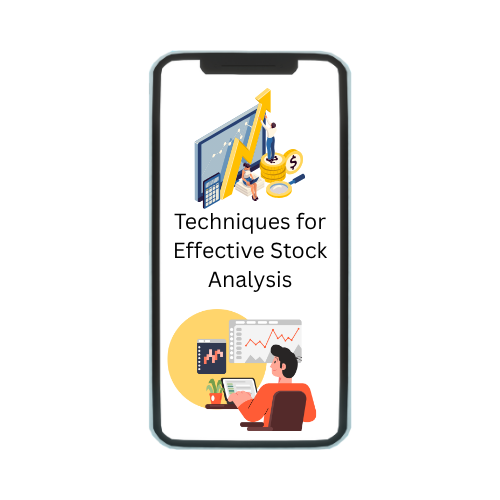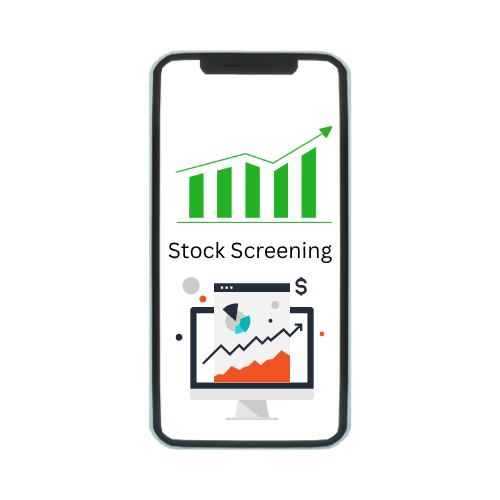In the vast landscape of financial markets, traders are constantly seeking tools and techniques to navigate the complexities of price movements and make informed decisions. One such tool that has gained prominence in the realm of technical analysis is the Point-and-Figure (P&F) chart. Unlike traditional charts that plot price against time, P&F charts offer a unique perspective by focusing solely on price changes. They strip away the noise of minor fluctuations and provide a clear visualization of market trends and reversals. Each X or O on a P&F chart represents a significant price movement, allowing traders to identify patterns and potential entry and exit points with precision. In this article, we delve into the intricacies of P&F charts, exploring their construction, interpretation, and advantages in trading. Through a detailed examination, we aim to equip traders with the knowledge and insights needed to leverage this powerful tool effectively in their trading strategies.
Definition And How To Use In Trade
Definition: Point-and-Figure (P&F) charts are a type of technical analysis tool used by traders to visualize and interpret price movements in financial markets. Unlike traditional charts that plot price against time, P&F charts focus solely on changes in price, filtering out noise and minor fluctuations. Each X or O on a P&F chart represents a significant price movement, providing traders with a clear and concise view of market trends and reversals. P&F charts help traders identify patterns and key support/resistance levels, aiding in decision-making and risk management.
How To Use In Trade: Traders use Point and Figure (P&F) charts in several ways to enhance their trading strategies. Firstly, P&F charts help identify trends by highlighting patterns such as double tops, double bottoms, and trendlines. By focusing on significant price movements, P&F charts provide a clearer picture of market sentiment and direction. Traders also use P&F charts to determine key support and resistance levels, which can be used to set entry and exit points for trades. Additionally, P&F charts help traders identify potential reversals in trends, allowing them to adjust their positions accordingly. Overall, by leveraging the insights provided by P&F charts, traders can make more informed trading decisions and improve their overall trading performance.
What Is A Point And Figure (P&F) Chart?
A Point-and-Figure (P&F) chart is a specialized form of technical analysis tool used by traders to visualize and analyze price movements in financial markets. What sets P&F charts apart from traditional charts is their unique approach to plotting data. Unlike candlestick or line charts, which display price movements over time, P&F charts focus solely on changes in price. Each column on a P&F chart represents a specific price range, and movements in the price are denoted by Xs and Os. Xs represent rising prices, while Os represent falling prices. P&F charts filter out minor price fluctuations and noise, providing traders with a clear and concise view of market trends and reversals. By identifying patterns and significant price movements, P&F charts help traders make informed decisions about buying, selling, or holding assets. This simplicity and objectivity make P&F charts a valuable tool for traders seeking to analyze market dynamics and develop effective trading strategies.
How To Calculate Point And Figure (P&F) Charts
Calculating Point-and-Figure (P&F) charts involves a structured approach that focuses on price movements rather than time intervals. To create a P&F chart, traders start by selecting a box size and a reversal amount. The box size represents the minimum price movement required to add a new X or O to the chart, while the reversal amount determines when a new column begins. Typically, the box size is set as a certain multiple of the minimum price movement, ensuring that insignificant price fluctuations are filtered out. The reversal amount specifies the number of boxes that must be exceeded in the opposite direction for a reversal to occur. Traders adjust these parameters based on the volatility and price range of the asset being analyzed. Once the box size and reversal amount are determined, traders plot Xs and Os on the chart to represent price movements. Xs are used to denote rising prices, while Os represent falling prices. By following this systematic approach, traders can construct P&F charts that provide valuable insights into market trends and potential trading opportunities.
What Does A Point And Figure (P&F) Chart Tell You?
A Point-and-Figure (P&F) chart offers valuable insights into market dynamics and price movements by focusing solely on significant price changes. Unlike traditional charts that incorporate time intervals, P&F charts filter out noise and minor fluctuations, providing a clear and objective view of market trends. Traders can use P&F charts to identify patterns such as double tops, double bottoms, and trendlines, which signal potential opportunities for buying or selling. Additionally, P&F charts help traders gauge the strength and direction of trends, as well as potential reversal points. The simplicity and objectivity of P&F charts make them particularly useful for traders seeking to analyze market sentiment and make informed decisions. By interpreting the patterns and signals presented on P&F charts, traders can enhance their understanding of market dynamics and improve their trading strategies.
The Difference Between Point And Figure (P&F) And Renko Charts
Point-and-Figure (P&F) Charts | Renko Charts |
Based on price movements; Xs and Os represent price changes | Based on price movements; bricks represent price changes |
Does not consider time; focuses solely on price changes | Does not consider time; focuses solely on price changes |
Variable; determined by the trader’s preferences | Fixed; determined by the chosen brick size |
Variable; determined by the trader’s preferences | Fixed; typically set as a multiple of the brick size |
Columns of Xs and Os; no fixed timeframe | Series of bricks; no fixed timeframe |
Identifies trends based on X and O formations | Identifies trends based on brick direction and placement |
Patterns include double tops, double bottoms, and trendlines | Patterns include trend reversals and continuations |
Can adjust box size and reversal amount based on volatility | May not adjust as dynamically to changes in volatility |
Versatile and adaptable to various asset classes and markets | Versatile and adaptable to various asset classes and markets |
Advantages Of A Point And Figure Chart
Point-and-Figure (P&F) charts offer several advantages for traders seeking to analyze market trends and make informed trading decisions. Here are the key advantages explained in detail:
- Clear Trend Identification: P&F charts filter out noise and focus on significant price movements, making it easier to identify trends. By plotting Xs for rising prices and Os for falling prices, P&F charts provide a visual representation of market direction, allowing traders to identify uptrends, downtrends, and sideways trends with clarity.
- Objective Analysis: Since P&F charts are based solely on price changes and do not consider time intervals, they offer an objective view of market dynamics. This eliminates the subjectivity often associated with other forms of technical analysis, allowing traders to make decisions based on concrete price action rather than subjective interpretations.
- Simplicity: P&F charts are straightforward to interpret, even for beginners in technical analysis. The chart’s structure, consisting of columns of Xs and Os, makes it easy for traders to identify patterns such as double tops, double bottoms, and trendlines. This simplicity reduces the learning curve for traders and facilitates quicker decision-making.
- Versatility: P&F charts can be applied to various asset classes and timeframes, from stocks and currencies to commodities and indices. Whether trading short-term intraday moves or long-term trends, P&F charts provide valuable insights into market sentiment and direction. Traders can adjust parameters such as box size and reversal amount to suit different market conditions and trading strategies.
- Risk Management: P&F charts help traders manage risk by highlighting potential entry and exit points in the market. By identifying key support and resistance levels, as well as trend reversals, P&F charts enable traders to set precise stop-loss and take-profit levels, thereby optimizing risk-reward ratios.
Conclusion
In conclusion, Point and Figure (P&F) charts stand as a powerful and versatile tool in the realm of technical analysis, offering traders a unique perspective on market dynamics and price movements. Through their focus on significant price changes and objective representation of trends, P&F charts provide clarity amidst the noise of market fluctuations. Their simplicity of interpretation and adaptability to various asset classes make them accessible to traders of all experience levels, facilitating informed decision-making and risk management. By leveraging the advantages of P&F charts, traders can enhance their understanding of market sentiment, identify potential trading opportunities with greater precision, and ultimately, strive towards achieving their financial goals. Whether used independently or in conjunction with other technical analysis tools, Point-and-Figure charts remain a valuable asset in the trader’s toolkit, guiding them towards success in the dynamic world of financial markets.
Frequently Asked Questions(FAQs)
A Point and Figure chart consists of columns of Xs and Os representing price movements, along with trendlines and patterns such as double tops and double bottoms.
Point and Figure charts can identify uptrends, downtrends, and sideways trends in the market, helping traders adapt their strategies accordingly.
Yes, traders look for patterns such as double tops, double bottoms, and bullish or bearish trendlines to identify potential entry and exit points in the market.




